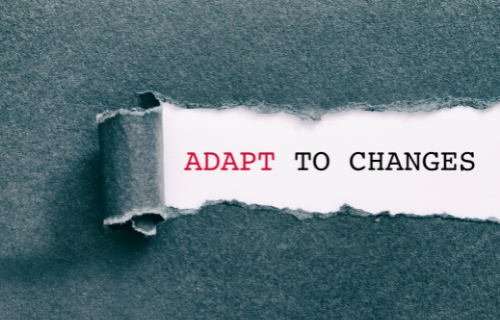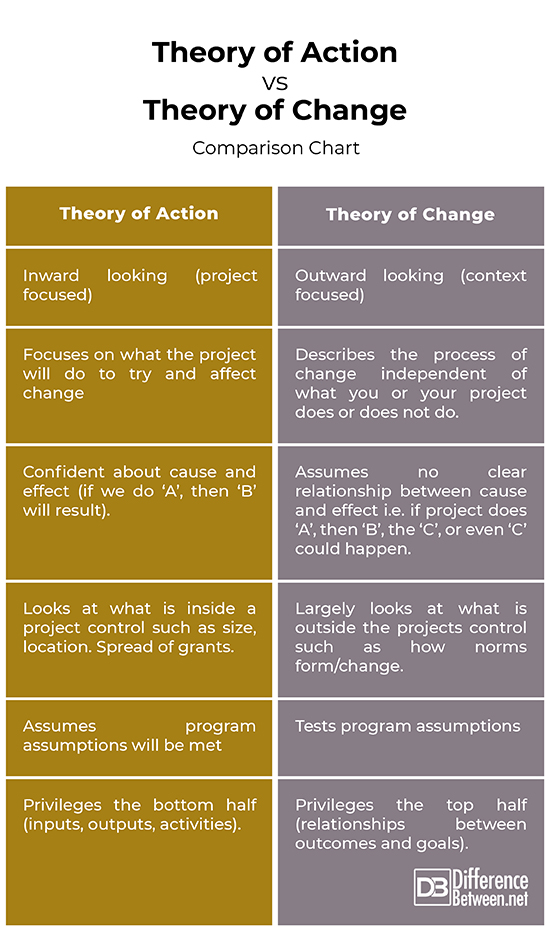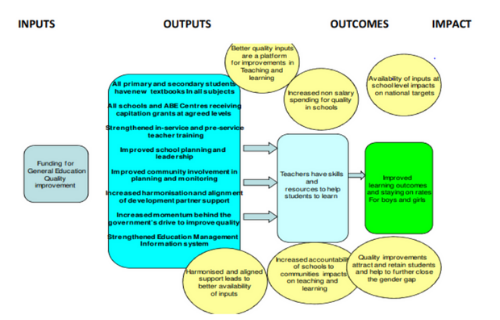Difference Between Theory of Action and Theory of Change

Theory of Action
Definition: It is a collection of implicit assumptions about how an organization can progress from its present condition to its intended future state.
A theory of action is a collection of connected ideas that form a logical chain of reasoning that explains how change leads to enhanced practices.
According to Haertel (1999, p. 663) it connects the dots, stating in plain language which traits are expected to result in the desired outcome.
Importance of theory of action
It is critical to establish a theory of action early in the design process since it has an impact on the theory of change and its implementation. A program theory cannot exist without a theory of action, and its justification cannot be evaluated unless the program logic defines how the change logic will be executed. The delivery model of a program generates outputs, outcomes, and impacts that should be documented as part of the program’s monitoring and evaluation. It is consequently critical to clarify a program’s theory of action from an evaluation standpoint.

Theory of Change
Weiss (1995) defines a theory of change quite simply and elegantly as a theory of how and why an initiative works. This definition implies that the first stage in performing any evaluation is to identify the intended results, the activities that will be used to accomplish those objectives, and the contextual elements that may affect how those activities are implemented and their ability to achieve desired outcomes.
A theory of change therefore describes how the activities of an intervention (such as a project, program, or policy) contribute to a chain of events leading to the desired or observed outcomes. Often created during the planning stage, a theory of change can also be beneficial for monitoring and evaluation.
Structure of a Good Theory of Change
Connell (1996) outlined three characteristics of an effective theory of change stakeholders should confirm before embarking on an evaluation and, moreover, should revisit during the initiative’s execution and evaluation.
A theory of change that is robust can show:
- if there are activities that you engage in that do not contribute to your goal achievement
- the adequacy of your activities in light of your objectives
- what actions and results you need to do on your own and which you cannot
- ways to assess your effectiveness
Usefulness of theory of change
A good theory of change can aid in the development of more effective key evaluation questions, the identification of key indicators for monitoring, the identification of data gaps, the prioritization of additional data collection, and the establishment of a structure for data analysis and reporting.
Differences between Theory of Change and Theory of Action
A contrast between a Theory of Change and a Theory of Action is unnecessary from a theoretical viewpoint. The only distinction is in the level of conceptualization.
The theory of change is concerned with the nuances of change and the mechanisms by which changed occurs, regardless of the nature of the activity. Broadly said, explains why change occurs through a sequence of ‘suppose, then’ assertions.
The theory of action elucidates the process through which strategies are designed to trigger the theory of change. This conceptual model of the theory of change demonstrates what the program accomplishes, how it initiates the organisational change, and how essential premises are identified.
The final examination of the theory of action may well confirm or deny the present program’s functioning. It will also uncover shortfalls that obstruct program functionality. This particular initiative makes use of ‘If, then’ expressions.
A theory of change denotes those mechanisms whereby certain social reform is set to take place.
A theory of action identifies a particular route within a theory of change, or an establishment’s role in accomplishing that transformation, centred on an evaluation of how the organization may provide the greatest benefit to the change initiative.
A Theory of Action is basically an opportunity to address the questions “How” and “Is this feasible?” A theory of change is a notion that might or might not prove to be correct. One of the chief factors it may turn out to be erroneous is when it fails to accurately forecast the manner in which a program might deliver change. A theory of change will consider various hypotheses and studies but may be doubtful to consider a delivery strategy.
Theory of Action vs. Theory of Change: Comparison Chart

Conclusion
At the start of the program’s design phase, it must affirm the program’s present state, the ideal future state, and the consequent route required to attain the desirable outcome. A theory of change is one way to accomplish this, but it risks becoming compromised when it is not complemented by a theory of action, which addresses critical underlying execution issues in program design phase.
Both theory of change and theory of action processes have revolutionized how organizations measure their effectiveness. It gives a practical and realistic framework for organizations to carry out the change they seek, assists in identifying potential problems, and provides a clear road map for all employees, funders, and investors.
FAQ
What is a theory of change Example?
The theory of change is an approach that is based on a diagram that depicts a variety of steps that will result in certain changes.

What is the difference between the theory of change and the logical framework?
The theory of change and theory of action help donors and project teams grasp what they are seeking to do, if it is achievable, and how they intend to accomplish it.
The theory of action outlines the method through which a project or program is conceived and implemented. Which combination of (a) activities (e.g. training, technical assistance), (b) delivery modes (e.g. grant or budget support), and (c) partners (e.g. faith-based organizations, non-governmental organizations) will you employ to attempt to accomplish your outputs or planned changes?
While a change theory describes the processes by which individuals, groups, or societies change. It is an assumption (or collection of assumptions) about how change will occur in a country regardless of a donor’s or project’s actions or inactions.
What is a Theory of Action plan?
A theory of action is a theory regarding the outcome of implementing a set of strategies. Developing a theory of action necessitates exercising critical judgment in determining which strategic acts will result in the desired outcomes. It is the process of linking our intentions with our intended results.
- Difference Between Theory of Action and Theory of Change - February 23, 2022
- Difference Between Manifest Function and Latent Functions - February 23, 2022
- Difference Between Autocracy and Dictatorship - February 18, 2022
Search DifferenceBetween.net :
Leave a Response
References :
[0]Connell, J. P. "First Thing First: A Framework for Successful School Site Reform." Philadelphia: Institute for Research and Reform in Education (1996).
[1]Haertel, Edward H. "Performance assessment and education reform." Phi Delta Kappan 80.9 (1999): 662.
[2]Weiss, Carol H. "Nothing as practical as good theory: Exploring theory-based evaluation for comprehensive community initiatives for children and families." New approaches to evaluating community initiatives: Concepts, methods, and contexts 1 (1995): 65-92.
